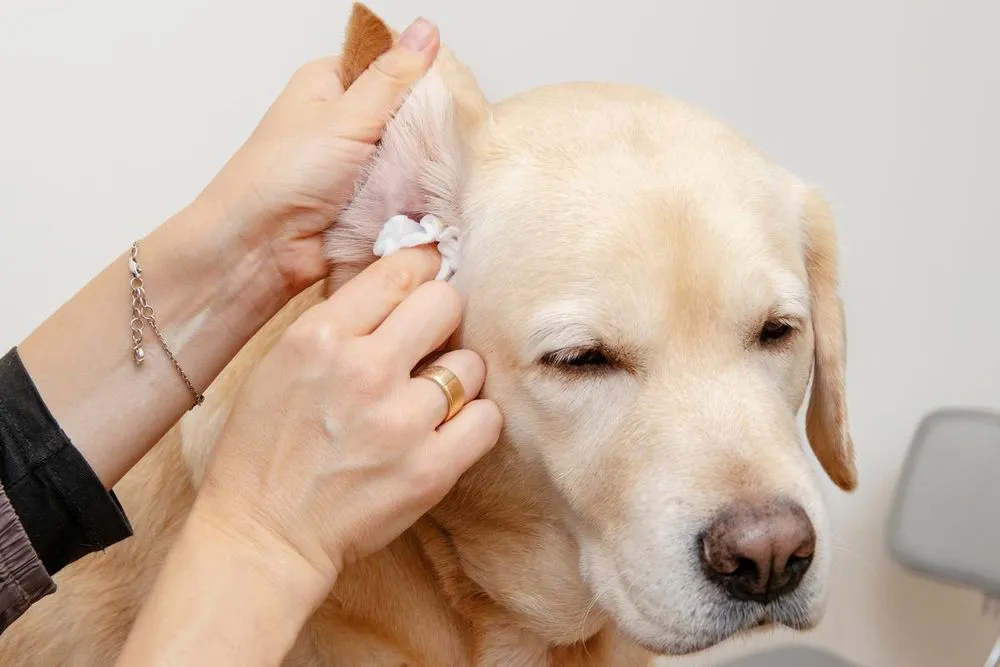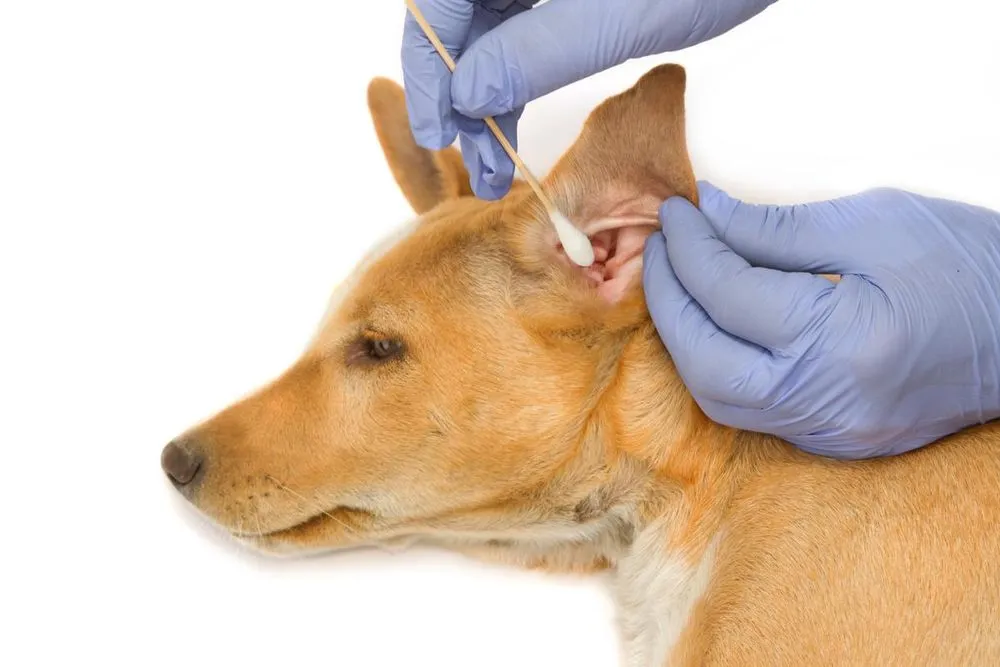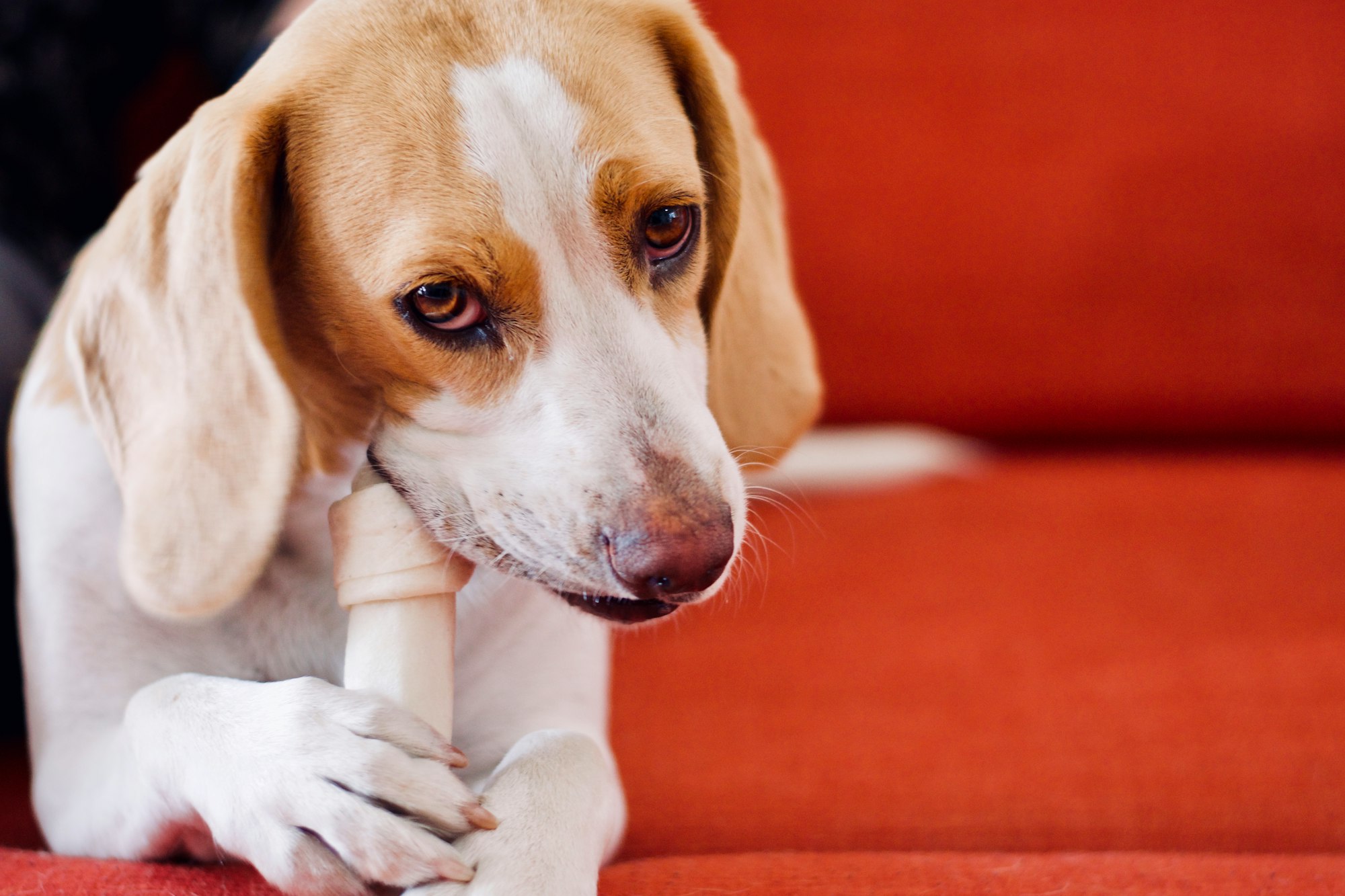Dogs are known for their acute sense of hearing, but their ears are also prone to accumulating dirt, debris, and sometimes even developing infections. Regular ear cleaning is an essential part of your dog's grooming routine and overall health care. Here, we will guide you through the process of cleaning your dog's ears, step by step, to ensure their ears remain clean and healthy.

Keeping your dog's ears clean is crucial for preventing infections, discomfort, and potential hearing loss. By learning how to properly clean your dog's ears, you can maintain their aural hygiene and catch any potential issues early on. It's critical to approach ear cleaning with care and follow the correct techniques to ensure your dog's safety and well-being.
Why is it important to clean your dog's ears?
Cleaning your dog's ears is necessary for several reasons. Here are a few key reasons:
1. Preventing infections: Dirt, debris, and excess wax can accumulate in your dog's ears over time. These substances create an ideal environment for bacteria, yeast, and parasites to thrive, leading to ear infections. Regular ear cleaning helps remove these potential sources of infection and maintain the cleanliness of the ears.
2. Maintaining ear hygiene: Dogs with floppy ears or excessive hair in their ear canals are more prone to ear problems. Cleaning your dog's ears helps remove excess hair, dirt, and debris that can contribute to ear issues. By keeping the ears clean, you minimize the risk of discomfort and maintain proper ear hygiene.
3. Detecting early signs of issues: Regular ear cleaning provides an opportunity to inspect your dog's ears for any signs of trouble. Redness, swelling, discharge, or a foul odor can indicate an underlying problem, such as an infection or ear mites. By cleaning your dog's ears, you can catch these issues early and seek veterinary assistance promptly.
Understanding the anatomy of a dog's ear
Before you start cleaning your dog's ears, it's essential to understand the basic anatomy of a dog's ear. A dog's ear consists of three main parts:
1. Outer ear: The outer ear includes the visible part of the ear, known as the ear flap or pinna, and the ear canal. The pinna collects sound waves and directs them into the ear canal.
2. Middle ear: The middle ear contains the eardrum (tympanic membrane) and a small chain of bones called ossicles. These bones transmit sound vibrations from the eardrum to the inner ear.
3. Inner ear: The inner ear consists of the cochlea, which is responsible for converting sound vibrations into nerve impulses that are then sent to the brain for interpretation. The inner ear also helps with balance and spatial orientation.
Understanding the different parts of your dog's ear will help you navigate the cleaning process safely and effectively.
By regularly cleaning your dog's ears, you can prevent infections, maintain ear hygiene, and detect any potential issues early on. This ensures that your furry friend can enjoy a clean and healthy pair of ears.

Signs of dirty or infected ears in dogs
Detecting dirty or infected ears in your dog is crucial to address any issues promptly. Common signs include:
· Foul odor coming from the ears
· Redness, inflammation, or swelling
· Excessive scratching or head shaking
· Discharge, wax buildup, or debris
· Sensitivity or pain when the ears are touched
· Loss of balance or coordination
If you notice any of these signs, it's essential to consult with a veterinarian to determine the underlying cause and appropriate treatment.
Preparing for the ear-cleaning process
Before you begin cleaning your dog's ears, it's needed to gather the necessary tools and create a calm environment. Here's what you'll need:
1. Ear cleaning solution: Choose a veterinarian-recommended ear cleaning solution specifically formulated for dogs. Avoid using water, alcohol, or hydrogen peroxide, as they can cause irritation or damage to the ears.
2. Cotton balls or gauze pads: These will be used to wipe away dirt, wax, and debris from the ears.
3. Treats or rewards: Having some treats on hand will help make the process more positive and rewarding for your dog.
4. Restraint techniques: Depending on your dog's temperament, you may need to employ gentle restraint techniques to keep them still during the cleaning process.
With the tools ready, find a quiet and comfortable area where you and your dog can focus without distractions.
Choosing the right cleaning solution
Selecting the appropriate ear-cleaning solution is crucial for the effectiveness and safety of the cleaning process. Consult with your veterinarian to find a suitable product that addresses your dog's specific needs. Avoid using products designed for humans or other animals, as they may contain ingredients that can harm your dog's ears. Once you have the recommended ear cleaning solution, read the instructions carefully to understand the proper application and any specific precautions to take.
A step-by-step guide to cleaning your dog's ears
Cleaning your dog's ears should be a gentle and systematic process. Follow these steps to ensure a thorough and safe cleaning:
1. Gathering the necessary tools
Collect the ear-cleaning solution, cotton balls or gauze pads, treats, and any other tools you may need. Have them within reach for easy access during the cleaning process.
2. Restraint and calming techniques
If your dog tends to be anxious or fidgety during grooming, use gentle restraint techniques to keep them still and calm. This can involve having another person gently hold your dog or using a comfortable muzzle if necessary. Positive reinforcement and treats can help keep your dog relaxed throughout the process.
3. Inspecting the ears for abnormalities
Before applying the cleaning solution, visually inspect your dog's ears for any abnormalities. Look for redness, swelling, discharge, or signs of infection. If you notice anything concerning, consult with a veterinarian before proceeding with the cleaning process.
4. Applying the cleaning solution
Follow the instructions on the ear cleaning solution for the recommended dosage and application method. Typically, you will need to lift the ear flap and gently squeeze the solution into the ear canal. Avoid inserting the applicator too deeply, as it can damage the eardrum. Make sure to use enough solution to thoroughly coat the inside of the ear canal.
5. Massaging the base of the ear
After applying the cleaning solution, gently massage the base of the ear for about 20 to 30 seconds. This helps distribute the solution and loosens any dirt or debris from the ear canal. You may hear a squishing sound, which is normal.
6. Wiping away the dirt and debris
Take a cotton ball or gauze pad and gently wipe the visible part of the ear canal. Avoid pushing the debris further into the ear. Use a new cotton ball or gauze pad for each wipe to prevent cross-contamination. Repeat this process until the cotton ball comes out clean.
7. Drying the ears thoroughly
To prevent moisture buildup, thoroughly dry your dog's ears after cleaning. You can use a clean, dry cotton ball or gauze pad to gently remove any excess moisture. Make sure to dry the ear canal as much as possible without causing discomfort.

Tips for successful ear cleaning
Proper ear cleaning goes beyond the actual cleaning process. Here are some additional tips to ensure your dog's ears remain healthy:
Frequency of cleaning
The frequency of ear cleaning depends on your dog's breed, activity level, and individual needs. Some dogs may require weekly cleaning, while others may only need it once a month. Consult with your veterinarian to establish an appropriate cleaning schedule for your dog.
Avoiding excessive moisture
Excessive moisture in the ears can lead to the growth of bacteria and yeast. After swimming or bathing your dog, make sure to thoroughly dry their ears to prevent moisture-related issues. You can use a clean towel or a gentle blow dryer in a low, cool setting.
Recognizing signs of ear problems
Regular ear cleaning provides an opportunity to monitor your dog's ears for any signs of trouble. Keep an eye out for redness, swelling, discharge, foul odor, or any changes in behavior related to the ears. If you notice anything abnormal, seek veterinary assistance promptly.
Seeking veterinary assistance when needed
While routine ear cleaning can help prevent many issues, some conditions require professional attention. If your dog's ears are excessively dirty, or inflamed, or if they exhibit signs of infection, it's crucial to consult with a veterinarian for a proper diagnosis and treatment plan.
Preventive measures for maintaining healthy ears
In addition to regular ear cleaning, there are several preventive measures you can take to maintain your dog's ear health:
Regular grooming
Maintaining a regular grooming routine that includes brushing and cleaning your dog's ears is essential. This helps remove dirt, debris, and excess hair that can contribute to ear problems. Know more about how to groom a dog.
Proper diet and nutrition
Providing your dog with a balanced diet and proper nutrition can contribute to overall ear health. Consult with your veterinarian to ensure your dog is receiving the appropriate nutrients to support their immune system and maintain healthy ears.
Avoiding exposure to irritants
Environmental factors such as allergens, chemicals, and parasites can irritate your dog's ears. Take precautions to minimize exposure to potential irritants and regularly inspect your dog's ears for any signs of discomfort.
Monitoring your dog's behavior and health
Your dog's behavior can provide valuable insights into their overall health, including ears. Pay attention to any changes in their activity level, appetite, or behavior, as these can indicate underlying issues. Regular check-ups with your veterinarian can help identify and address any health concerns early on, so care for how often vet, is required.

Common misconceptions about cleaning dog ears
When it comes to cleaning dog ears, several misconceptions need to be addressed:
Using cotton swabs or other objects
Using cotton swabs or other objects to clean your dog's ears can be dangerous. It can push debris further into the ear canal, potentially causing injury or damage to the eardrum. Stick to using cotton balls or gauze pads for safe and effective cleaning.
Overcleaning the ears
While regular ear cleaning is required, overcleaning can disrupt the natural balance of the ear and strip away protective oils. Stick to the recommended cleaning frequency and consult with your veterinarian if you have any concerns.
Skipping ear cleaning altogether
Neglecting ear cleaning can lead to a buildup of wax, debris, and potential infections. Make ear cleaning a part of your dog's grooming routine to ensure their ears remain clean and healthy.
Conclusion
Regular ear cleaning is a crucial aspect of your dog's overall health care. By following the proper techniques and using veterinarian-recommended products, you can keep your dog's ears clean, prevent infections, and maintain their hearing abilities. Remember to monitor your dog's ears for any signs of trouble and seek veterinary assistance when needed.
FAQs
1. How often should I clean my dog's ears?
The frequency of ear cleaning depends on your dog's individual needs. Some dogs may require weekly cleaning, while others may only need it once a month. Consult with your veterinarian to establish an appropriate cleaning schedule for your dog.
2. Can I use water to clean my dog's ears?
Using water alone is not recommended for cleaning your dog's ears, as it can introduce excess moisture and potentially cause infections. It's best to use a veterinarian-recommended ear-cleaning solution specifically formulated for dogs.
3. What should I do if my dog's ears appear red and inflamed after cleaning?
If your dog's ears appear red and inflamed after cleaning, it could be a sign of an underlying issue or sensitivity. Discontinue the cleaning process and consult with your veterinarian for a proper diagnosis and treatment plan.
4. Are there any natural remedies for cleaning dog ears?
While some natural remedies may have anecdotal benefits, it's essential to consult with your veterinarian before using them. They can provide guidance and recommend safe and effective natural alternatives if appropriate for your dog.
5. Should I clean my dog's ears before or after a bath?
It's generally recommended to clean your dog's ears before bathing them. This helps prevent water from entering the ear canal during the bath, reducing the risk of moisture-related issues. However, consult with your veterinarian for specific recommendations based on your dog's needs.

